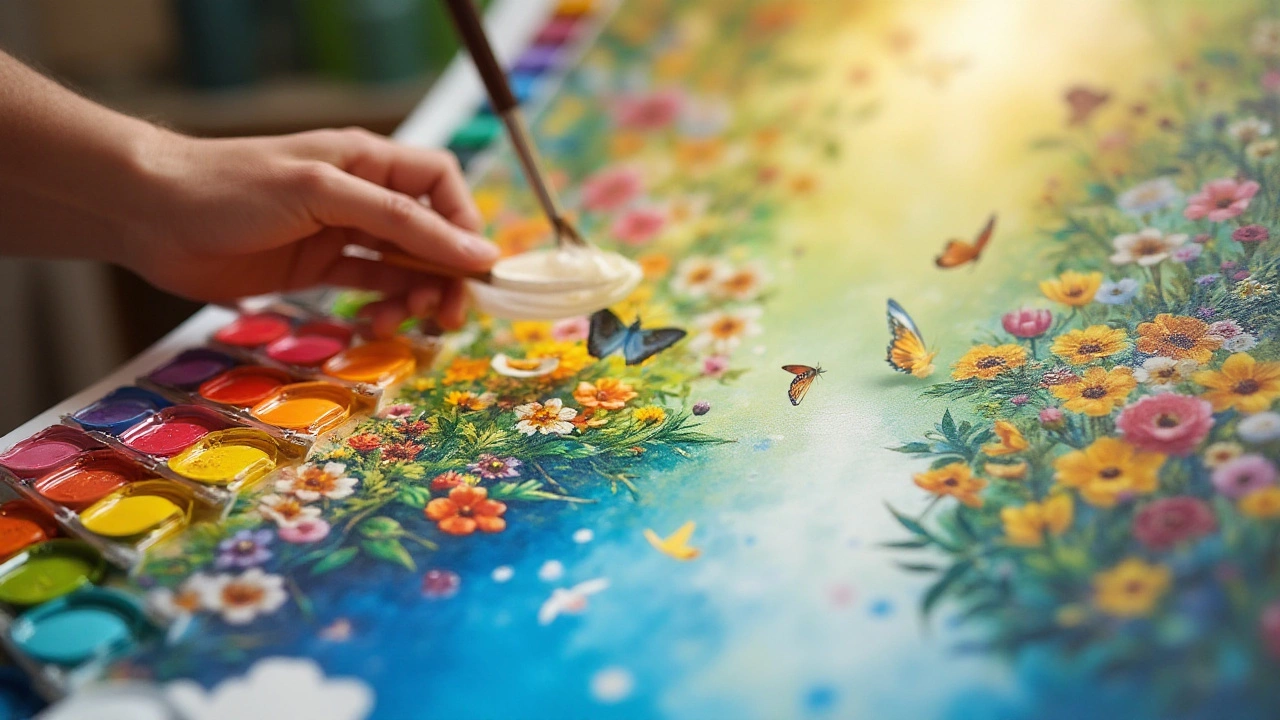Beginner Colors: Simple Palettes Every New Artist Should Know
If you’re just starting out, the world of colour can feel overwhelming. Ten tubes, endless shades, and the pressure to pick the ‘right’ hue often leads to analysis paralysis. The good news? You don’t need a rainbow to create great art. A small, well‑thought‑out palette lets you mix most colours you’ll need while keeping your workspace tidy and your budget low.
Start with the three primary colours—red, blue, and yellow—plus a white and a black. This classic five‑tube setup gives you the building blocks for virtually any hue. Mix a little red and yellow for orange, add a touch of blue for green, and you’ve got the basics covered. The key is to use high‑quality, opaque paints; they blend cleanly and keep your mixtures vibrant.
Choosing Your First Palette
When you hit the art store, look for colours that are labeled “primary” or “mixing” rather than fancy names like “Cadmium” or “Alizarin.” For beginners, student‑grade acrylics work well because they dry fast and are easy to clean. If you prefer oil, go for a small set of artist‑grade tubes—these produce richer mixes and don’t dry out as quickly.
Consider the type of work you want to do. Landscape painters often benefit from adding a warm earth tone (like burnt sienna) and a cool complement (like ultramarine blue). Portrait artists might add a small amount of a flesh‑tone tube to save time later. The point is to pick one extra colour that matches your style, not to stock every hue on the shelf.
Practical Mixing Tips
1. Start light, end dark. Mix lighter shades first, then deepen them with a bit of black or the complementary colour. This prevents muddy results.
2. Use a palette knife. It keeps your brush clean and lets you see the true colour of the mix without streaks.
3. Keep a ‘mixing cheat sheet.’ Write down the ratios that give you your favorite greens, purples, and skin tones. You’ll save time and repeat success.
4. Test on a scrap. Before you commit to a large area, swipe a bit of the mixture onto a spare piece of canvas or paper. You’ll spot any unwanted undertones early.
5. Limit the number of colours on the palette at once. Too many tubes lead to accidental mixing of unwanted shades. Stick to three to five mixes per session and add new colours only when you need them.
Remember, colour is as much about feeling as it is about theory. Don’t be afraid to experiment—sometimes the most striking hues come from unexpected combos, like a splash of orange with a hint of purple. Keep a small notebook of those happy accidents and you’ll build a personal palette that reflects your style.
Finally, clean your brushes thoroughly after each session. Residue from previous mixes can turn a fresh colour into a muddy mess, especially when you’re working with a limited palette.
With these basics, you’ll move from “I don’t know what colour to use” to “I’ve got a go‑to set that works for any project.” Dive in, mix a few swatches, and watch how quickly confidence grows. Happy painting!

13 Nov 2024
The world of watercolor begins with the right colors, tailored to bring your artistic vision to life. Exploring the foundational hues can open the door to a captivating array of artworks, whether you’re capturing the vibrant energy of a sunny day or the subtle tones of a quiet evening. Understanding which colors to include in your beginner palette can set you up for success, offering a balance between creativity and control. This article delves into the must-have colors for every novice watercolor artist and tips to effectively use them.
Continue reading...
